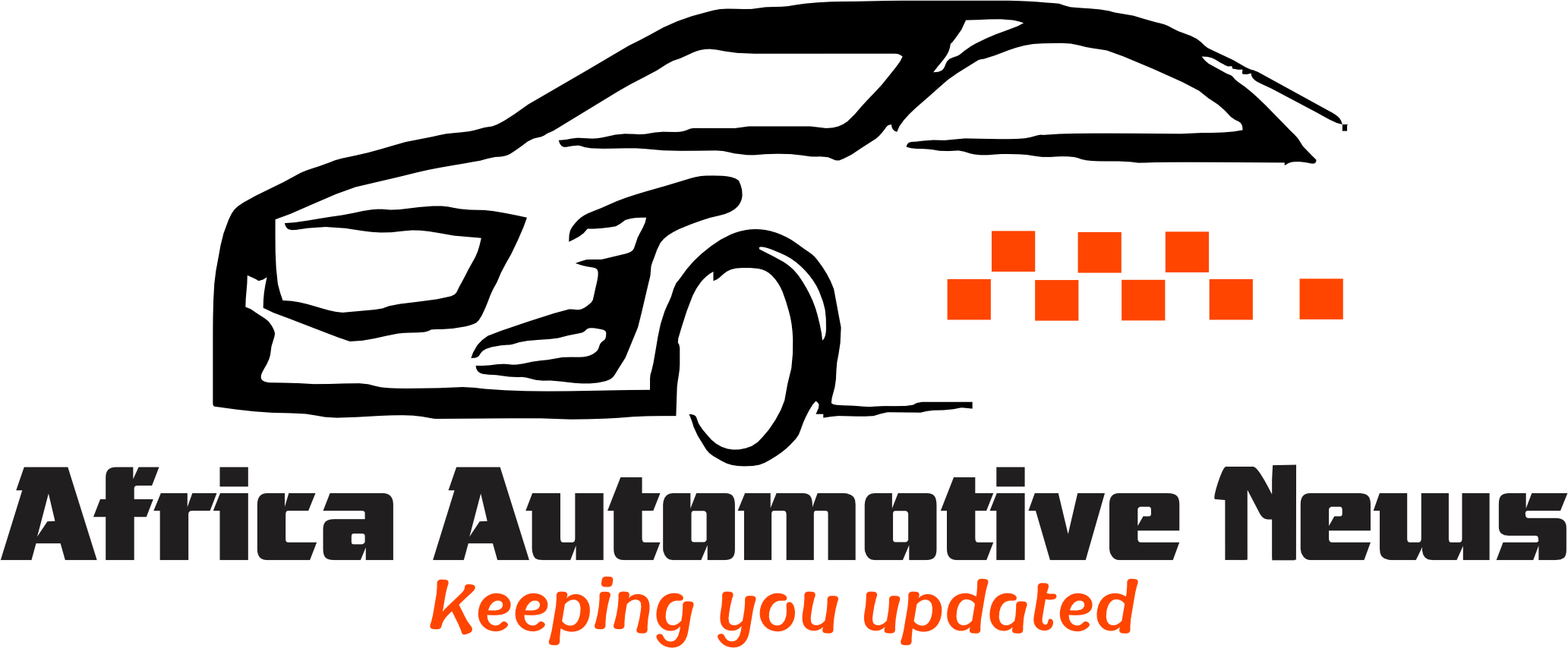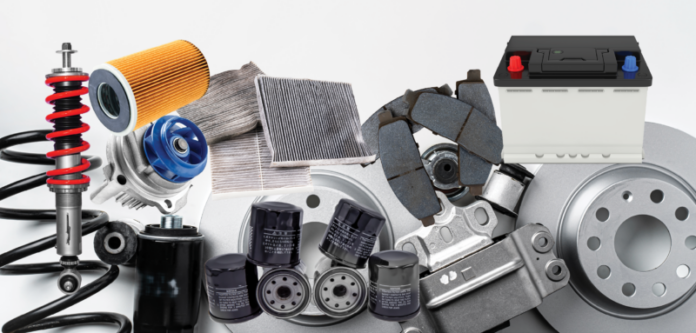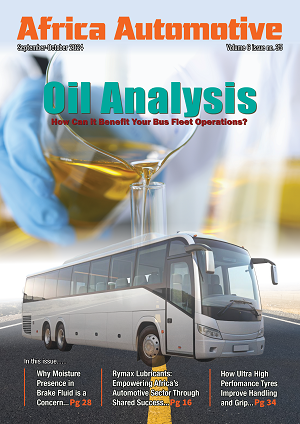Africa’s automotive market offers a seemingly endless array of aftermarket parts and OE to keep your vehicle running smoothly. However, the lure of bargain prices is strong, and that’s precisely how counterfeiters hook their prey. They prey on your desire for a good deal, often mimicking legitimate brands with near-perfect packaging and labeling. But the savings are deceptive, and there comes the BIG question about your safety. “How safe is your vehicle?” questions Jessy Trad – Commercial Director, MENA Region at Crane Authentication.

According to Trad, “Every day, millions of drivers rely on their cars for safe travel, but how many can be sure their vehicle is made with authentic parts? In Tanzania alone, vehicle owners spend four times more on maintenance due to counterfeit parts causing more frequent breakdowns.”
She further states that, “The automotive parts industry is a booming business, valued at over USD 700 billion, according to Business Research Insights. As with any sizeable market, bad actors are bound to exploit it, and the challenge is heightened as more consumers turn to online retailers for competitive prices.”
The High Stakes of Counterfeit Parts
As a consumer, it is essential to be aware of the risks associated with counterfeit auto parts. These fake components can compromise your safety, performance and longevity of your vehicle, putting you and your passengers at risk. Additionally, knowing how to identify these forged parts is crucial for protecting your investment and ensuring your safety on the road.

As Monika Autengruber – Head of Marketing at SECURIKETT Ulrich & Horn GmbH says, “Counterfeit automotive parts are a growing concern in the global market, posing serious risks to vehicle performance and driver safety. To help consumers protect themselves, experts advise being vigilant and informed when purchasing replacement parts or accessories.”
In addition to the safety risks, there are also economic consequences that can definitely cause damage to your vehicle, leading to costly repairs and decreased vehicle value. These consequences can translate to reduced performance, safety hazard, increased repair costs, voiding warranties and legal ramifications for putting yourself and others at risk.
Spotting the Market Imposters
To some consumers and vendors, identifying a counterfeit part may not be easy, as it requires a keen eye and attention to detail. So, how can you protect yourself from the dangers of counterfeit auto parts? Trad answers this question saying that, “No single practice is enough to keep you safe when making a purchase, but combining these simple steps will help you stay ahead of counterfeiters.” Here are some expert’s recommendations to keep in mind:
1. Packaging and Labeling: Compare the packaging to what you would expect from the OEM. “One of the first warning signs is the packaging. Genuine parts typically come in high-quality packaging that includes correct branding, barcodes, and serial numbers. In contrast, counterfeit products often show signs of poor printing, spelling errors, or blurry logos,” cautions Autengruber. Additionally, genuine parts usually have a unique, tamper-evident seal. If the seal is broken or missing, there you have it, a red flag!
2. Part Number Verification: Every genuine automotive part has a unique part number. Always verify the part number on the component against the manufacturer’s database or a reliable parts catalog such as TecDoc by TecAlliance. Discrepancies in the number or inconsistencies with the manufacturer’s database are a strong red flag. “When buying online, stick to well-known, verfied platforms to significantly reduce your risk,” recommends Trad. “Look for authentication devices such as labels, QR codes and serial numbers which help check a product’s authenticity,” she adds.
In her opinion, Autengruber affirms that, “Verification tools provided by many manufacturers offer a reliable way to check authenticity. By entering a serial number or scanning a QR code, consumers can quickly confirm whether a product is genuine.” She further warns, “If the code appears invalid or suspicious, the product should not be used.”
3. Material Quality and Finish: Counterfeit parts often exhibit inferior material quality. Examine the part closely for flaws like rough edges, uneven surfaces, discoloration, and signs of poor casting or molding. Compare the weight and feel of the part to genuine examples if possible, counterfeit parts might feel lighter.
4. Visual Inspection of Markings: Genuine parts feature precise and clearly visible markings, including the manufacturer’s logo, part number, and other identifying information. Nowadays, “An increasing number of manufacturers are also implementing Security Labels with Unique Identifiers (UIDs) on their packaging. These QR codes are unique to each item, allowing for easy verification,” says Autengruber.
“Crucially, these labels are designed to be tamper-evident: once peeled off, they leave an irreversible mark, making them impossible to transfer to counterfeit packaging. This innovation also helps prevent the refilling of original packaging with fake contents,” she adds. Cautiously, examine these details under good lighting.
5. Price Discrepancies: While price alone isn’t a definitive indicator, an unusually low price compared to other retailers or the manufacturer’s suggested retail price (MSRP) should raise suspicion. As Trad endorses, use price radar tools, “If the price looks too good to be true, it probably is. Authorized price checker tools can help you avoid fake listings.”
6. Seller Reputation: Be wary of sellers with limited information, poor communication, or a history of negative feedback. Purchasing from reputable, established auto parts retailers minimizes the risk of encountering counterfeits. Trad advices to check the distributor’s reviews from other shoppers and use government websites to verify registered businesses before clicking on the “Buy” button.
7. Supplier Certification: When purchasing from a supplier, inquire about their certifications and authorization from the respective automotive manufacturers. Legitimate suppliers will readily provide this information.
8. Traceability and Documentation: Ask your supplier for documentation regarding the part’s origin and chain of custody. This should track the part from the manufacturer to the supplier to you. Genuine parts usually have a clear and verifiable path.
9. Seek Expert Opinion: If you’re unsure, consult with a qualified mechanic or automotive professional. They possess the expertise to identify subtle discrepancies and can provide a second opinion on the authenticity of a part.
Protecting Yourself from Counterfeit Automotive Parts
It might be tempting to click “buy” on that suspiciously cheap alternator or brake rotor, but the truth is, you are playing a high-stake gamble on your safety and those of others. Clearly, the consequences of using counterfeit parts are severe. However, by diligently employing the identification methods outlined above, you can significantly reduce your risk. Being extra vigilance can save you from costly repairs, potential safety hazards, and the frustration of dealing with substandard components. Prioritize reputable suppliers, carefully inspect parts before installation, and don’t hesitate to seek expert validation when needed. Your safety, that of others and the longevity of your vehicle are worth the extra effort!




